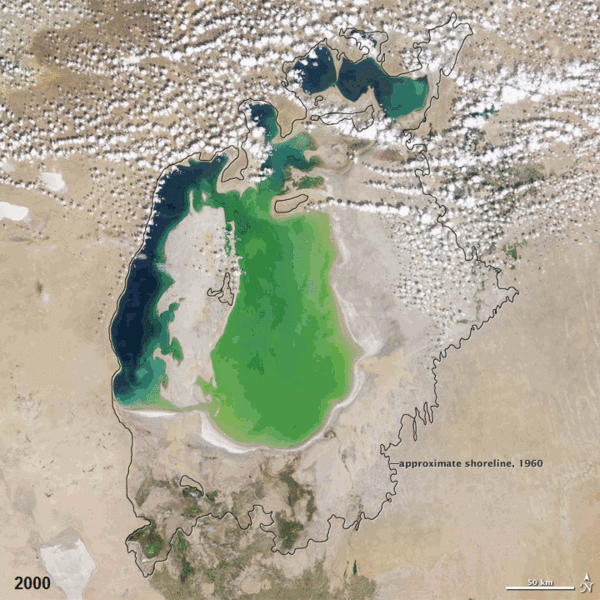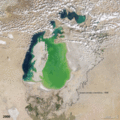Fayl:Aral sea.gif

Kórip shıǵıw kólemi: 600 × 600 пиксел. Basqa rezolyutsiyalar: 240 × 240 пиксел | 480 × 480 пиксел | 720 × 720 пиксел.
Túp fayl (720 × 720 piksel, fayldıń ólshemi: 3,16 MB, MIME tipi: image/gif, тұйық, 12 кадр, 12с)
Fayl tariyxı
Aldın usı fayl qanday kóriniste bolǵanın kóriw ushin kún-ay/waqıt degendi basıń.
| Sáne/Waqıt | Miniatyurası | Ólshemleri | Paydalanıwshı | Pikir | |
|---|---|---|---|---|---|
| házirgi | 07:38, 2011 j. dekabrdiń 19 |  | 720 × 720 (3,16 MB) | ComputerHotline | == Summary == {{Information |Description={{en|In the 1960s, the Soviet Union undertook a major water diversion project on the arid plains of Kazakhstan, Uzbekistan, and Turkmenistan. The region’s two major rivers, fed from snowmelt and precipitation in |
| 12:19, 2010 j. dekabrdiń 25 |  | 720 × 720 (2,92 MB) | ComputerHotline | == Summary == {{Information |Description={{en|In the 1960s, the Soviet Union undertook a major water diversion project on the arid plains of Kazakhstan, Uzbekistan, and Turkmenistan. The region’s two major rivers, fed from snowmelt and precipitation in |
Fayldıń paydalanılıwı
Bul faylǵa hesh bir bet siltelmegen.
Fayldı global paydalanıw
Tómendegi basqa wikilar bul fayldan paydalanadı:
- ba.wikipedia.org joybarında qollanıw
- ca.wikipedia.org joybarında qollanıw
- en.wikibooks.org joybarında qollanıw
- es.wikipedia.org joybarında qollanıw
- et.wikipedia.org joybarında qollanıw
- eu.wikipedia.org joybarında qollanıw
- fr.wikipedia.org joybarında qollanıw
- hsb.wikipedia.org joybarında qollanıw
- kk.wikipedia.org joybarında qollanıw
- pl.wikipedia.org joybarında qollanıw
- ro.wikipedia.org joybarında qollanıw
- ru.wikipedia.org joybarında qollanıw
- ru.wikibooks.org joybarında qollanıw
- ru.wikinews.org joybarında qollanıw
- simple.wikipedia.org joybarında qollanıw
- sk.wikipedia.org joybarında qollanıw
- uz.wikipedia.org joybarında qollanıw



